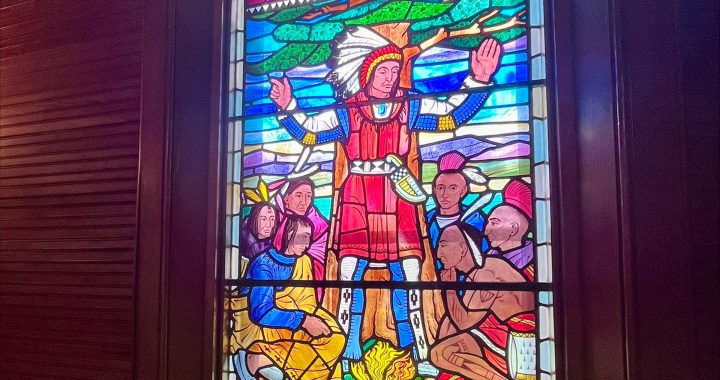By Todd Lamirande
APTN Investigates
Family members of workers killed or injured by an explosion that destroyed a northern British Columbia sawmill are questioning the official finding that wood dust was the cause of the catastrophe.
On Jan. 20, 2012, the Babine Forest Products mill near Burns Lake exploded and caught fire, killing Robert Luggi and Carl Charlie and injuring 20 others, some critically.
The province’s workers compensation board, known as WorkSafe BC, did a 13-week investigation. Its report concluded that sawdust became packed inside an electric motor/gear assembly. A belt moving through the sawdust caused friction, eventually creating a flame that ignited wood dust concentrated in the air.
Dirk Weissbach operated a trim saw and was critically injured in the explosion. This explanation from WorkSafe leaves him scratching his head.
“How could it explode?” he asks. “When this happened, [the sawmill] was clean. Green wood. Clean air. It was a big clean-up the day before because production wasn’t running.”
WorkSafe said the mill had been processing more and more wood from trees killed by pine beetles. The wood is drier and the sawdust particles are much finer, making it a more effective fuel. But Weissbach and others say that in the days leading up to the explosion, the mill was using regular wood, known as green wood.
“And then on a clean day like this: the building explodes like nothing? That’s what’s really questionable to me,” says Weissbach.
Workers had complained about the smell of gas earlier in the day. As far as Weissbach knows, nothing was ever done about it.
WorkSafe’s internal expert ruled out natural gas as the main fuel source for the explosion, although the WorkSafe reports says natural gas did fuel the subsequent fires.
The report said that a sufficient quantity needed to cause the explosion “would have been easily detected by workers… and would most likely have made them ill.”
However, an outside expert said “an open flame, metal halide lights, hot surfaces, electric arcs, motor control centre panels, static, or friction” must have caused the explosion.
And still another expert, early in the investigation offered an opinion that gas did cause the explosion.
The WorkSafe report concluded the explosion was “preventable” but the provincial government decided that errors made by WorkSafe during the investigation would prevent any charges that might have been laid against the company from being successfully prosecuted.
This uncertainty over the cause of the Babine tragedy is one of the reasons families are pushing the BC government to re-think its decision to not hold a public inquiry.
To that end, an online petition demanding a public inquiry was started in Maureen Luggi’s name. Her husband Robert perished in the explosion. The goal was to get 7,500 names to present to Premier Christy Clark. As of March 28, 2014, there are 7,318 supporters.
“And so if we get 10 thousand names, 50 thousand names, whatever. All I know is with the seven thousand names we have right now, we have a lot of support right across the province,” says Luggi. “And I am amazed at the comments being presented.”
“SOME kind of accountability!!! Quite honestly, I am disgusted with Premier Clarke… disappointed and disgusted with her attitude of just ‘giving up’ on this family,” writes Dawn Dixon.
“The company needs to take responsibility and should be punished for the suffering of these people. Totally unjust,” writes Kasandra Johnny-Turbide.
Maureen Luggi is realistic about what an independent inquiry could accomplish.
“Legally, they will not be held accountable. Morally, I think that an inquiry would address that for us.”
As well the stories of the survivors would go on the record.
“Those workers were not given the light of day to express what went on for them,” she says.
Luggi believes she will prevail.
“I cannot just let this go. I can’t let my husband die like that and nobody cares and nobody does anything about it.”










